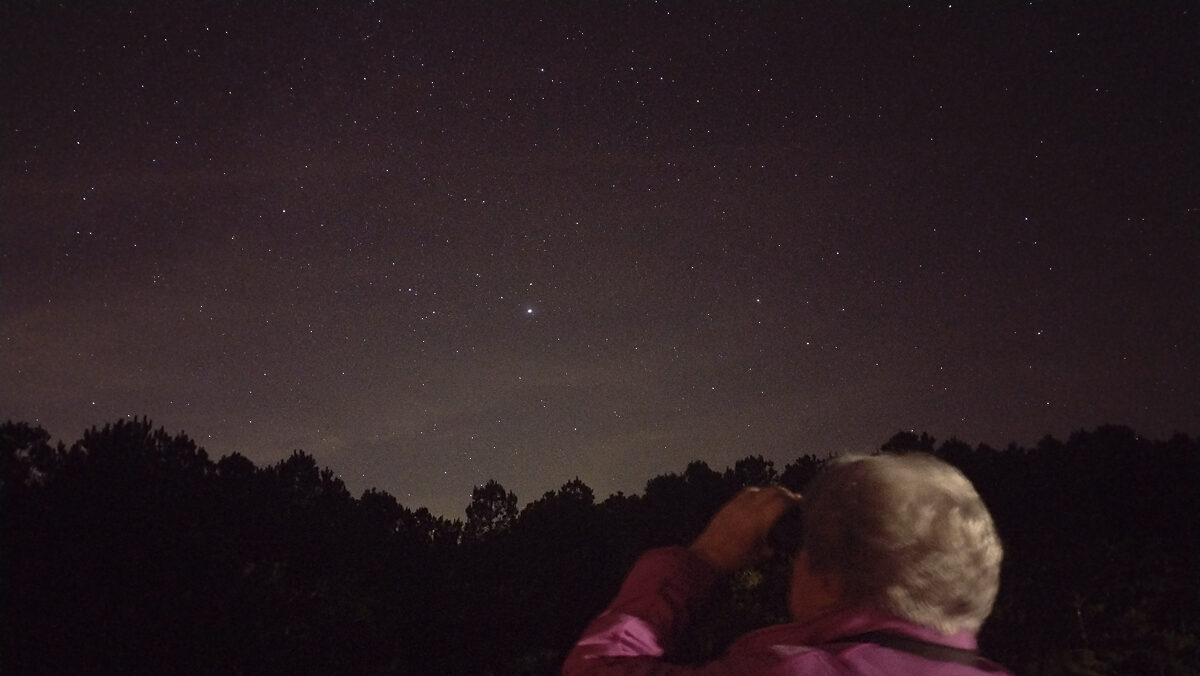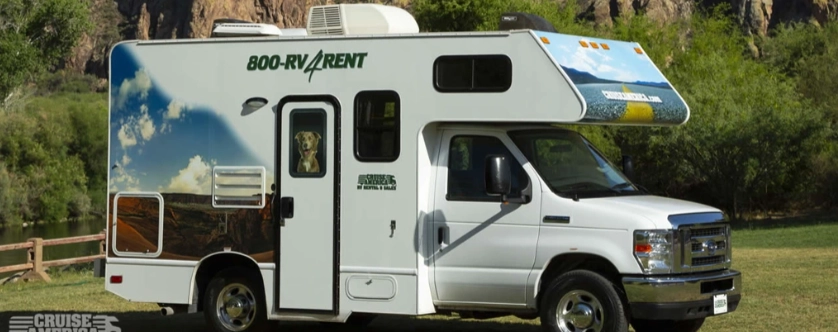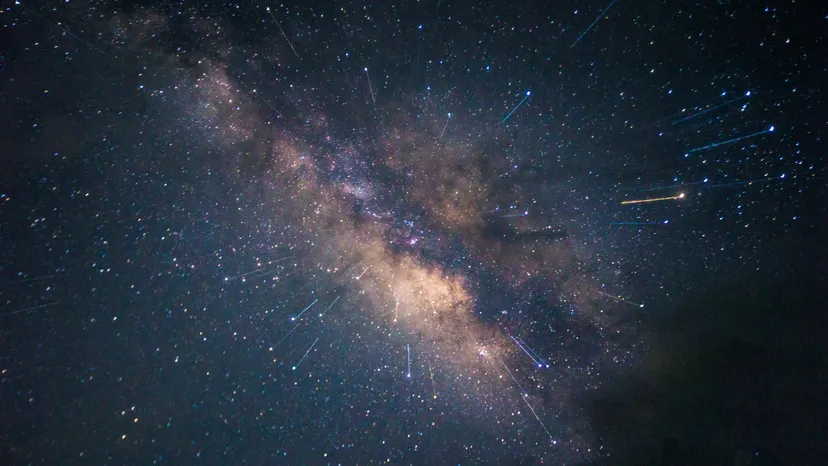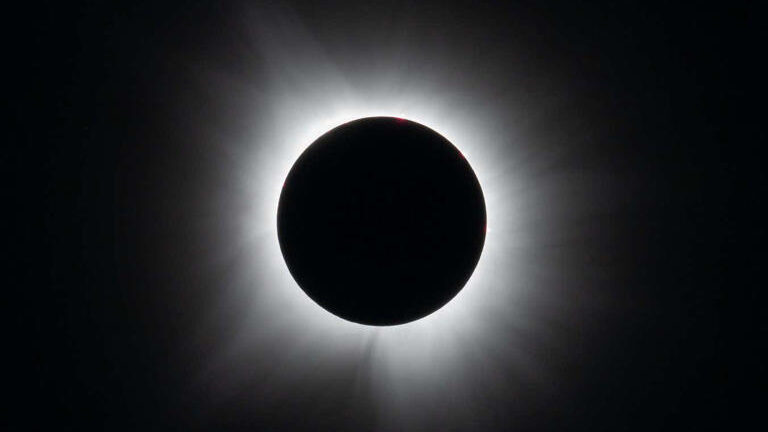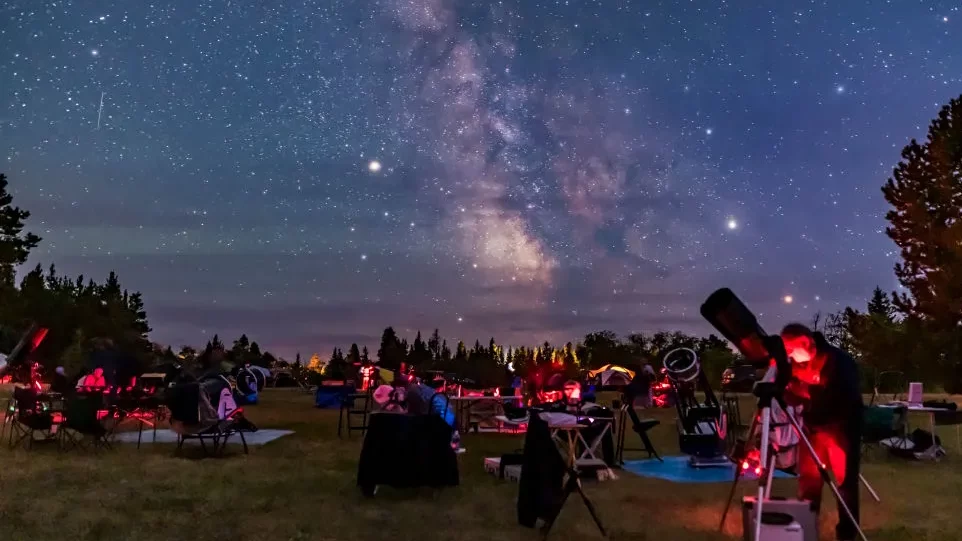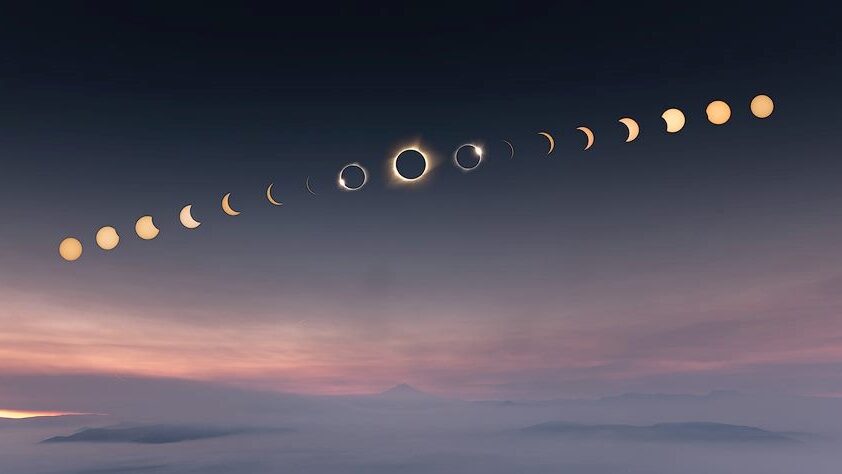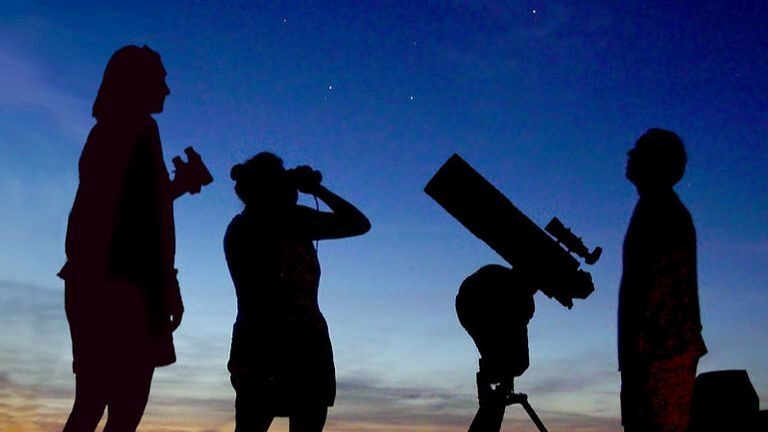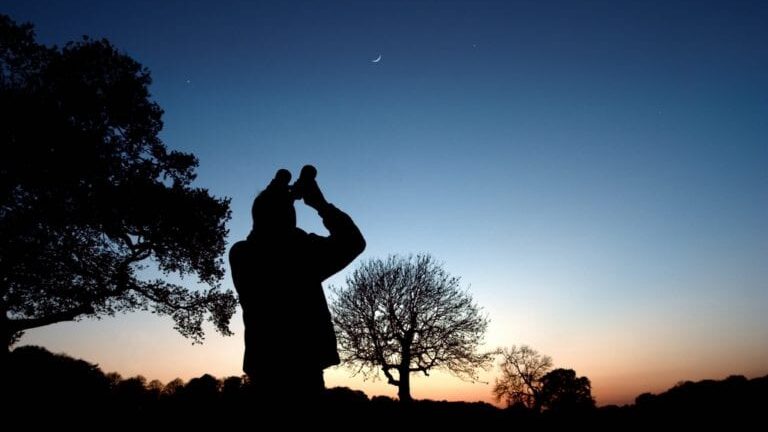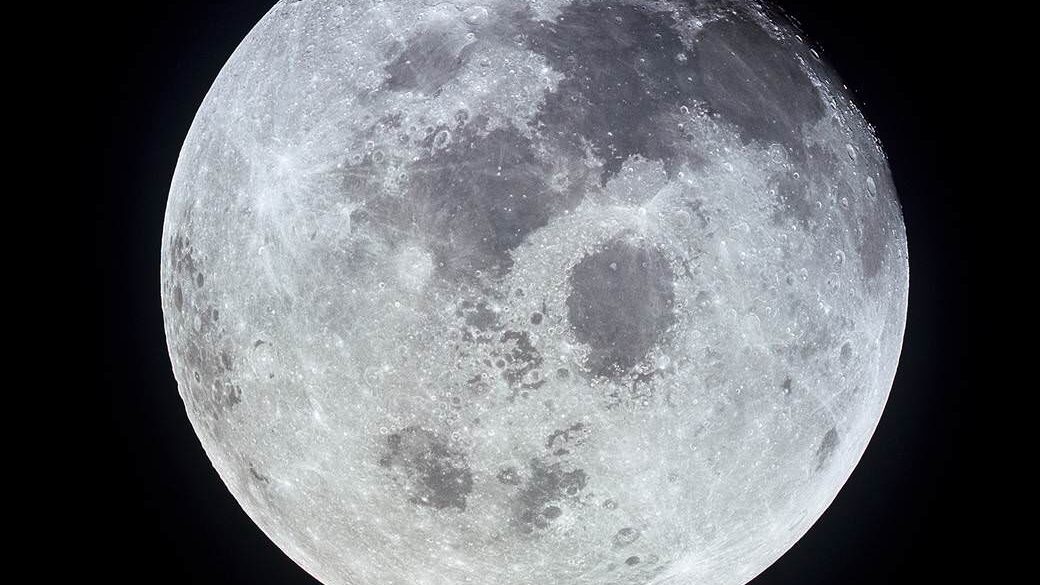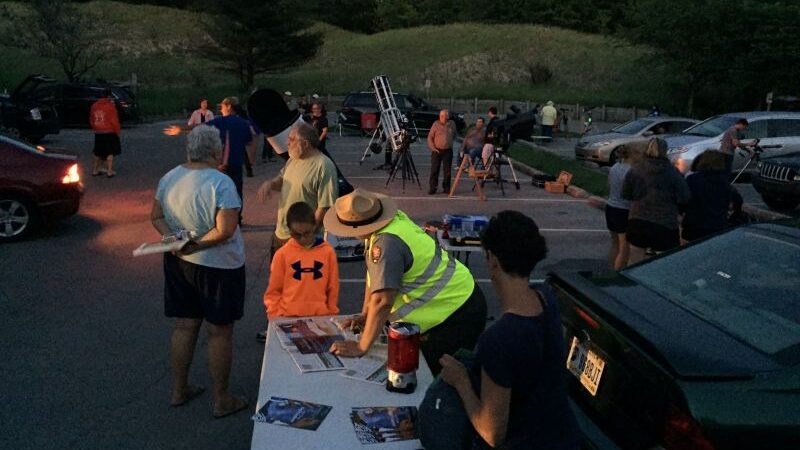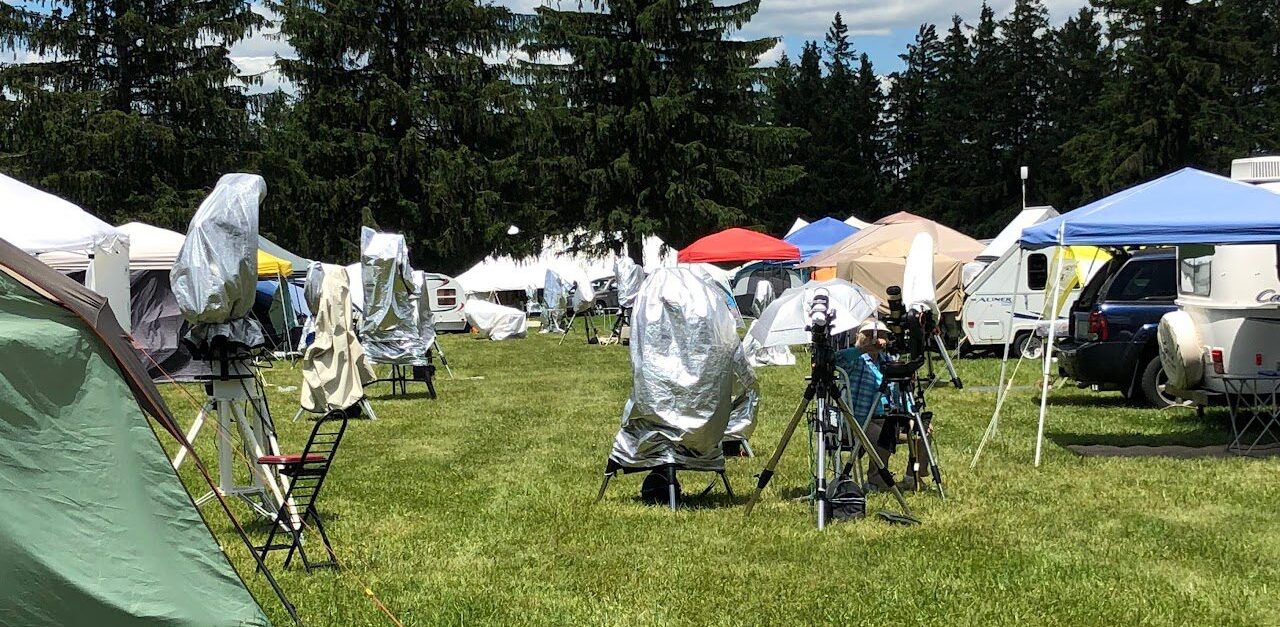How and where to observe the night sky where you live
To see stars and planets you’re at the whim of weather gods. The challenge is having a clear or almost clear sky to see what’s out there and beyond. Start with a sense of adventure and wonder and be flexible. You can’t schedule a cloud-free night, but you can take advantage of technology to know when there’s a good prediction for one. once you start observing from your backyard you’ll be hooked. Here’s how and where to stargaze in your backyard with Clear Dark Sky and easy to use free stargazing software like Stellarium and Star Walk 2
You’ll notice we don’t mention using binoculars right off the bat because you don’t need them to look at the sky and see objects. (Hopefully not nearby airplane traffic.} Begin this adventure just observing and taking in a wide angle view of the sky. Sit in a lawn chair or fold down a chaise lounge and just take it all in. The night sky is pretty spectacular on a clear night.
Find your best view from your front or backyard or wherever you can see an unobstructed view of the sky. That might mean sitting at a picnic table at a local park or playground that isn’t brightly lit with security lighting or parking lot lights.
How we observe the night sky at home
The best viewing for us is our driveway in the front of our home. Katie uses 12×42 binoculars while sitting on a lawn chair and Gene uses 20×80 astronomy binocs on a tripod. The tripod is lightweight and easy to set up and provides a stable surface for the jumbos. There’s a neighborhood light post nearby which Gene threatens to shoot with a BB-gun but cooler heads prevail and he’s learned to live with the light it casts. Sometimes we set up on a second floor deck but it’s surrounded by very tall trees making for a very confined view of the night sky.
Cleardarksky.org
www.cleardarksky.com is a website developed by Allan Rahill of the Canadian Meteorological Center with a wealth of information for amateur astronomers in search of viewing opportunities. The chart shows when to expect clear and dark skies in a specific area in the next 96 hours. And while the stars and planets are predictable, the weather not so much.
Choose your state and then find a location near you.
To interpret the data in the chart, read from left to right and look for a column of blue blocks. That’s when the sky will likely to be clear and dark. There’s a more detailed explanation on the site to walk you through how to use it. In general, the clear sky chart predicts hourly cloud cover, atmospheric transparency and seeing opportunities.
Make a long-range observing plan
The first time you have a good clear night begin with the moon and spend time observing its many phases and faces. Then move on to find and identify the planets. Next look for the brightest stars. The more nights you observe, the more encouraged you become and aware of the millions of objects in space. So keep track with a notebook to record your findings. It can be as simple as “(Date) Venus, just to the upper right of the moon”.
TIP Our firsthand experience using binoculars stargazing: Don’t go stargazing without these 3 items: 1. For a steady supported view, use a tripod that’s lightweight and easy to assemble 2. To find your way around a group of stargazers in the dark, use a small mini red flashlight instead of a white light that interferes with night vision. A red light head lamp is also a good idea. 3. Get a red dot finder (RDF) to pinpoint a star or object. It superimposes a small red dot on the sky where you’re looking. Tripod, Red Light, RDF repeat.
Use free cellphone software to discover the night sky
As you observe and build confidence in what you’re seeing, use your cellphone to confirm what you see and learn more with free software while stargazing from your backyard. There’s a lot of free software to choose from but here are two that we use that will introduce you to amazing facts and features about the night sky. Here’s how to use free software to stargaze in your backyard
Stellarium
Stellarium is free software; you can redistribute it and/or modify it under the terms of the GNU General Public License as published by the Free Software Foundation; either version 2 of the License, or (at your option) any later version.
This program is distributed in the hope that it will be useful, but WITHOUT ANY WARRANTY; without even the implied warranty of MERCHANTABILITY or FITNESS FOR A PARTICULAR PURPOSE. See the GNU General Public License for more details.
Star Walk 2
Star Walk 2 is a next-generation tool for not only learning the exact position of stars, planets, constellations, comets, ISS, satellites, star clusters, nebulae and meteor showers in the night sky. It’s also for investigating its’ depth by watching constellations, nebulae and satellites from aside.
Gene and Katie Hamilton are longtime stargazers who follow the stars and write about their dark sky adventures. They are members of the Outdoor Writers Association of America.
Post Views: 2,023
|

